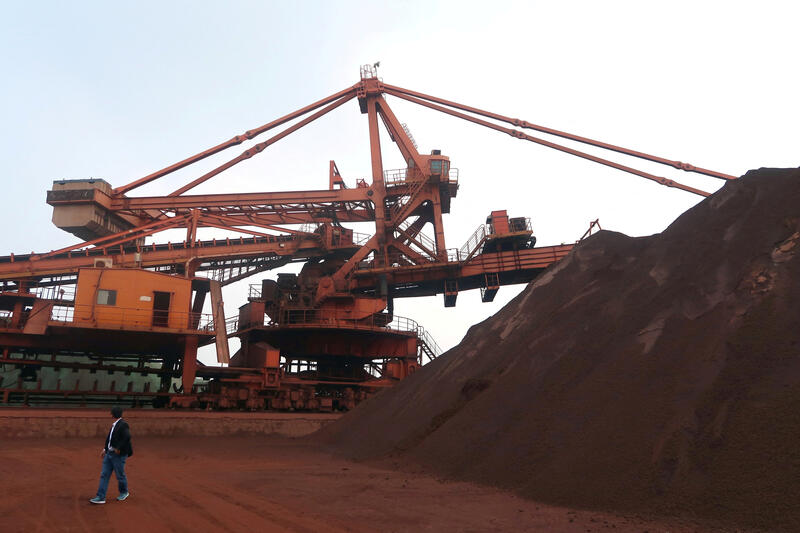pctay123
Publish Date: Tue, 03 Sep 2024, 12:00 PM

LAUNCESTON, Australia, Sept 3 (Reuters) - China's iron ore futures suffered their worst one-day price drop for almost two years on Monday, but the evaporating optimism in the market has yet to show up in imports of the key raw material for making steel.
Contracts on the Dalian Commodity Exchange ended day trading on Monday at 723.5 yuan ($101.83) a metric ton, 4.83% down from the previous close and the largest daily loss since Oct. 31, 2022.
The weakness was mirrored by Singapore Exchange futures , which closed at $96.60 a ton, down 2.13% from the prior close and the lowest since Aug. 16.
The catalyst for Monday's weakness was a raft of data that indicated that the world's second-biggest economy is struggling to gain momentum.
The private Caixin/S&P Global Purchasing Managers' Index (PMI) rose to 50.4 in August from 49.8 the previous month, beating analysts' forecasts in a Reuters poll of 50.0 and moving above the 50-level that demarcates expansion from contraction.
While this may initially appear like a solid outcome, the detail was less bullish with the key sub-index for new exports orders falling for the first time in eight months and at the fastest pace since November last year.
The Caixin PMI covers smaller and more export-orientated firms, so weakness in this measure is likely more significant than the strength in the rest of the survey.
The official PMI was also downbeat, with the August reading coming in at 49.1, down from July's 49.4, and falling for a sixth consecutive month.
The National Bureau of Statistics PMI focuses more on large and mainly state-controlled corporations and includes the key steel sector.
Further bad news for the steel industry came on Sunday, with the average price for new homes across 100 cities nudging up 0.11% in August from July, slowing from the previous month's 0.13% gain, according to data from property researcher China Index Academy.
The property sector has so far failed to respond to a series of stimulus measures from Beijing, and remains a drag on the overall economy.

ROBUST IMPORTS
Against this backdrop its perhaps no surprise that iron ore prices are struggling.
But what is perhaps surprising is how strong China's iron ore imports have been. China is the world's biggest buyer of seaborne iron ore, accounting for about 75% of the global total.
Official customs data for August will be released next week, but data from commodity analysts Kpler points to imports being the strongest since January.
August imports are estimated by Kpler at 109.1 million tons, which would be up from the customs figure of 102.8 million and the most since January's 111.9 million.
For the first seven months of the year iron ore imports rose 6.7%, and if August's official numbers are in line with the Kpler estimate, this pace of growth is likely to increase.
Part of the explanation for the increase in iron ore imports this year has been that inventories needed to be rebuilt, after dropping to the lowest in seven years in October of last year.
But since then more than 45 million tons have been added to port stockpiles monitored by consultants SteelHome , taking the total to 150.8 million as of last week.
This is close to the 27-month high of 151.8 million from late July and is a sign that inventories are at a comfortable level, and may be even too high given steel production is subdued.
In addition to re-stocking driving iron ore imports, it's also likely that optimism over the stimulus measures being put in pace encouraged some speculative buying of cargoes, especially as the iron ore price has trended weaker since early July.
But that optimism is also likely to have been dented by the ongoing soft data, leaving lower prices as the sole reason for China to import more iron ore than it needs to meet its current and likely future steel production.
The opinions expressed here are those of the author, a columnist for Reuters.
Sign up here.
https://www.reuters.com/markets/commodities/fading-china-optimism-hits-iron-ore-prices-not-yet-volumes-russell-2024-09-03/












